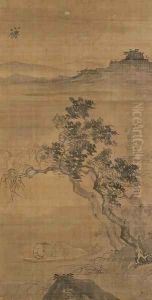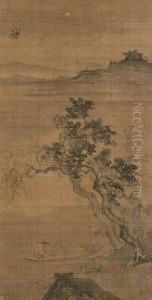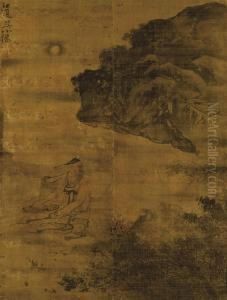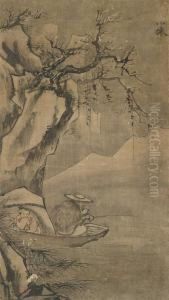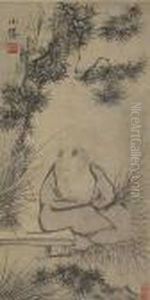Wu Wei Paintings
Wu Wei was a prominent Chinese painter during the Ming Dynasty, celebrated for his landscape paintings and his adept use of ink. He was born in 1459 in Zhejiang Province and lived during an era when the literati painting style, pursued by scholar-officials and the literati class, was at its zenith. Wu Wei was not of the scholarly class himself, but his artistic talent secured him a place among the most renowned painters of his time.
Wu Wei's life was one marked by both artistic innovation and personal controversy. He was known for his heavy drinking and eccentric behavior, which often infused his work with a sense of dynamism and freedom. His painting style was characterized by a bold and unrestrained use of brushstrokes, which were said to reflect his unorthodox lifestyle. Wu Wei's paintings often depicted natural landscapes, imbued with a sense of movement and spontaneity that set his work apart from the more restrained styles of his contemporaries.
Despite his personal idiosyncrasies, Wu Wei was highly respected for his mastery of ink and his ability to capture the spirit of nature. His works were sought after by patrons and collectors, and he held official positions as a court painter. Wu Wei's influence extended beyond his lifetime, impacting the development of landscape painting in China. His unique style contributed to the broader diversity of Chinese painting, and his works continue to be studied and appreciated for their artistic vigor and expressive quality. Wu Wei's death in 1508 marked the end of a remarkable career, but his legacy lived on through his contributions to the world of Chinese art.
